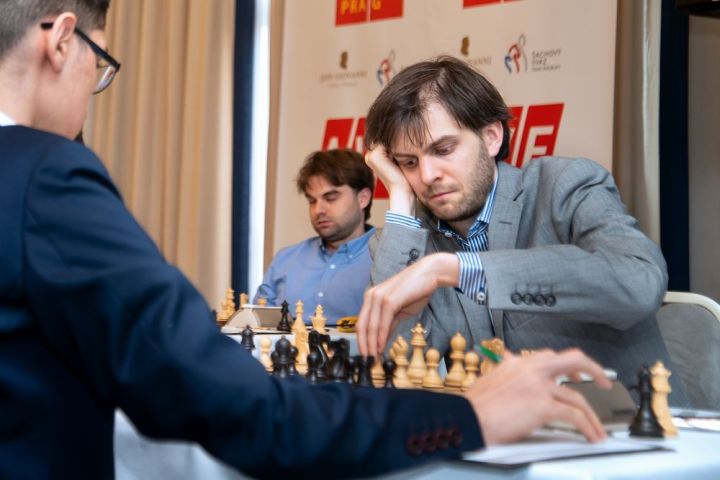All games drawn in Round 2
Well, what a tournament we are having in Prague! After the excitement in Round 1, I was checking the games of the players just before I slept, and I inwardly sighed as the positions soon started becoming drawish. Well, if you have players like Grandelius and Anton, that's never an indication of how things might go! Both these super strong GMs were soon winning against the higher-rated opponents. Grandelius against Firouzja and Anton against Vidit. But the conversion of winning positions was where they faltered, resulting in all games ending in draws.
However, the level of fighting chess that is being witnessed shows how much each player wants to win, and I am sure that the remainder of the tournament will be many things, just not a damp squib! On to the games now!
Grandelius - Firouzja ½-½
The game of the round. Alireza decided to experiment with 1...e5 against Nils' king pawn, and we initially got a seemingly boring 5.♖e1 Berlin. However, Nils' legendary positional play soon rewarded him with a winning advantage, which he surprisingly failed to convert. Here are the critical positions of the game, followed by detailed analysis
The♖e1 Berlin, currently the main way of combating 3...♞f6 in the Ruy Lopez.
9.d4 is the critical path if White wants to play for an opening advantage. I have analysed 9.♘c3!? in the notes to the game.
11.Bf4!? by Nils is the main move in the position, but recently top players have gone on to explore positions arising after 11.c3 ♜xe1 12.♕xe1 ♞e8.
15...c6 by Alireza is a novelty, but a logical one. Here the best way for White to continue is... well I'll leave you to it! Nils played 16.♗d3!? and did get something in the position, but is it right to be satisfied with this move?
It is from this point that Alireza started going wrong. Perhaps it is the deceptive simplicity of the position, perhaps the lack of experience in open games or perhaps dreams of exploiting the bishop pair in a long endgame. 19...♝e4!? is interesting, but the sort of plan-less move that a lesser player might make in a hurry. Instead, what is Black's best sequence to equalize? (Hint - occupy the open file!)
After some imprecise play by Black this position was reached. How should Black now play — for a win or for a draw? Mind you, Alireza chose the wrong plan with 24...♝e7?! here, showing how complex the position actually is!
The concept of answering tough questions to improve our game has been known for a long time. Here is one of them — how should Black now play so as to not get a seriously bad position with little hope? Hint: Don't be afraid to sacrifice material! By the way, Firouzja's move here — 26...♝d6? — was a serious mistake!
Please, no more questions! Well, I hear you! Here the cleanest way to try to get counterplay is 33...♛c2!. Instead, 33...♛c3 should have cost Black the game after 34.♖e3! ♛d2 35.♔g2!. Instead, after a comedy of errors White ended up getting a winning position on move 40.
Okay, last question for this game — how should White arrange his pieces to win the game here? 41.♖d7?! played by Grandelius is not recommended, so I hope you see the only way to win!
Alireza calmly builds a fortress, and Nils continues out of inertia, but the position is a draw.
The final fascinating position in the game. White can't break through this fortress. Draw.
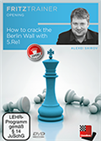 Alexei Shirov shows on this DVD how White can develop pressure and seize the initiative with 5.Re1 against the Berlin Wall.
Alexei Shirov shows on this DVD how White can develop pressure and seize the initiative with 5.Re1 against the Berlin Wall.
Not the best of starts for the young phenom, but he definitely has luck on his side now! | Photo: Vladimir Jagr
Anton - Vidit ½-½
Perhaps one of the biggest misses of Anton's fledgling top-flight career. After an imaginative exchange sacrifice deep into the endgame Anton managed to find himself in the driver's seat, only to completely fumble at the finish.
The correct plan here was to go to the kingside with 46.♔e5!. Instead, after 46.♔c5?? Black managed to find a godsend perpetual and live to fight another day!
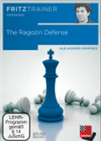 The Ragozin is being played by every top grandmaster in the world - it is time you also add it to your repertoire to get interesting and dynamic positions against 1. d4!
The Ragozin is being played by every top grandmaster in the world - it is time you also add it to your repertoire to get interesting and dynamic positions against 1. d4!
GM Alejandro Ramirez analyses every single move that White can play once the Ragozin is reached, but due to several transpositional possibilities he always emphasises strategic goals to keep in mind.
Vidit with his best game of the day trophy for Round 1! | Photo: Vladimir Jagr
Harikrishna - Duda ½-½
One can't term what Harikrishna failed to do in this game a miss, but it was certainly a case of not having the best opening preparation possible. Here is the only time Harikrishna could have tried for an advantage:
The significance of quiet moves can never be underestimated. Here Harikrishna had the fine 12.a3! at his disposal, creating the unpleasant threat of b4. If Black plays a5, White has already forced a concession, and with accurate play could count on an advantage. Instead, after 12.♘e4(?!) Duda equalized comfortably and managed to hold on.
Shankland - Navara ½-½
The quietest draw of the day, though I am surprised Shankland didn't go for a more critical continuation on move 11:
Somehow 11.♕c1 fails to impress me. Instead, White should try 11.♘c3!?
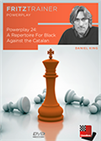 On this DVD Grandmaster Daniel King offers you a repertoire for Black against the Catalan, based around maintaining the rock of a pawn on d5. Keeping central control ultimately gives Black good chances to launch an attack against the enemy king.
On this DVD Grandmaster Daniel King offers you a repertoire for Black against the Catalan, based around maintaining the rock of a pawn on d5. Keeping central control ultimately gives Black good chances to launch an attack against the enemy king.
Sam should start firing soon! | Photo: Vladimir Jagr
Ragger - Vitiugov ½-½
A typical Classical French that saw Black play precisely to hold the draw. There is only one interesting moment involving whether inserting a particular developing move helps black or makes his life more difficult:
Should Black insert ♜fc8 before a5?
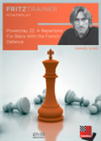 On this DVD Grandmaster Daniel King offers you a repertoire for Black with the French. Based around ten stem games, all White's major lines against the French are covered.
On this DVD Grandmaster Daniel King offers you a repertoire for Black with the French. Based around ten stem games, all White's major lines against the French are covered.
Slow Start for Marcus Ragger in this event | Photo: Vladimir Jagr
Standings after Round 2
Links
